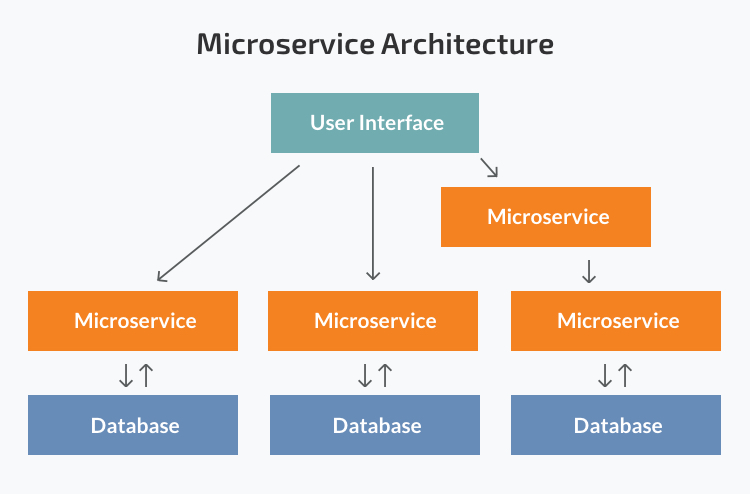Microservices – also known as the microservice architecture – is an architectural style that structures an application as a collection of services that are. Highly maintainable and testable. Loosely coupled. Independently deployable. Organized around business capabilities.
MICROSERVICES ARCHITECTURE
While a monolithic application is a single unified unit, a microservices architecture breaks it down into a collection of smaller independent units. These units carry out every application process as a separate service. So all the services have their own logic and the database as well as perform the specific functions.

Strengths of the Microservice Architecture
- Independent components. Firstly, all the services can be deployed and updated independently, which gives more flexibility. Secondly, a bug in one microservice has an impact only on a particular service and does not influence the entire application. Also, it is much easier to add new features to a microservice application than a monolithic one.
- Easier understanding. Split up into smaller and simpler components, a microservice application is easier to understand and manage. You just concentrate on a specific service that is related to a business goal you have.
- Better scalability. Another advantage of the microservices approach is that each element can be scaled independently. So the entire process is more cost- and time-effective than with monoliths when the whole application has to be scaled even if there is no need in it. In addition, every monolith has limits in terms of scalability, so the more users you acquire, the more problems you have with your monolith. Therefore, many companies, end up rebuilding their monolithic architectures.
For instance, our partner Currencycloud needed to migrate to microservices due to the growing number of transactions their platform processed. Founded in 2012, the company offers a global B2B payments platfrom. Initially, their monolithic architecture could handle the number of transactions they had. Yet with the company’s growing success, they needed a more efficient solution they could scale even further in the future. So they have switched to microservices.
- Flexibility in choosing the technology. The engineering teams are not limited by the technology chosen from the start. They are free to apply various technologies and frameworks for each microservice.
- The higher level of agility. Any fault in a microservices application affects only a particular service and not the whole solution. So all the changes and experiments are implemented with lower risks and fewer errors.
Weaknesses of the Microservice Architecture
- Extra complexity. Since a microservices architecture is a distributed system, you have to choose and set up the connections between all the modules and databases. Also, as long as such an application includes independent services, all of them have to be deployed independently.
- System distribution. A microservices architecture is a complex system of multiple modules and databases so all the connections have to be handled carefully.
- Cross-cutting concerns. When creating a microservices application, you will have to deal with a number of cross-cutting concerns. They include externalized configuration, logging, metrics, health checks, and others.
- Testing. A multitude of independently deployable components makes testing a microservices-based solution much harder.
- Microservices – also known as the microservice architecture – is an architectural style that structures an application as a collection of services that are. Highly maintainable and testable. Loosely coupled. Independently deployable. Organized around business capabilities.
- AJAX Crud with laravel 5.8 - October 29, 2021
- Upload image in the database with local folder and image send mail. - October 23, 2020
- How to protect .env file in Laravel. - September 10, 2020

